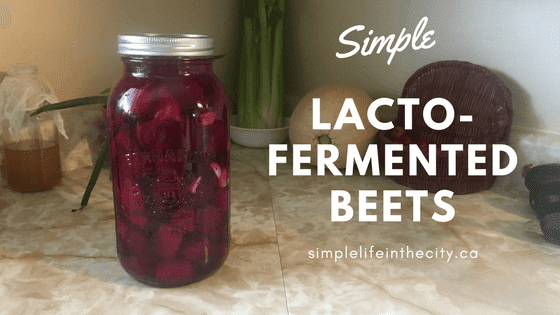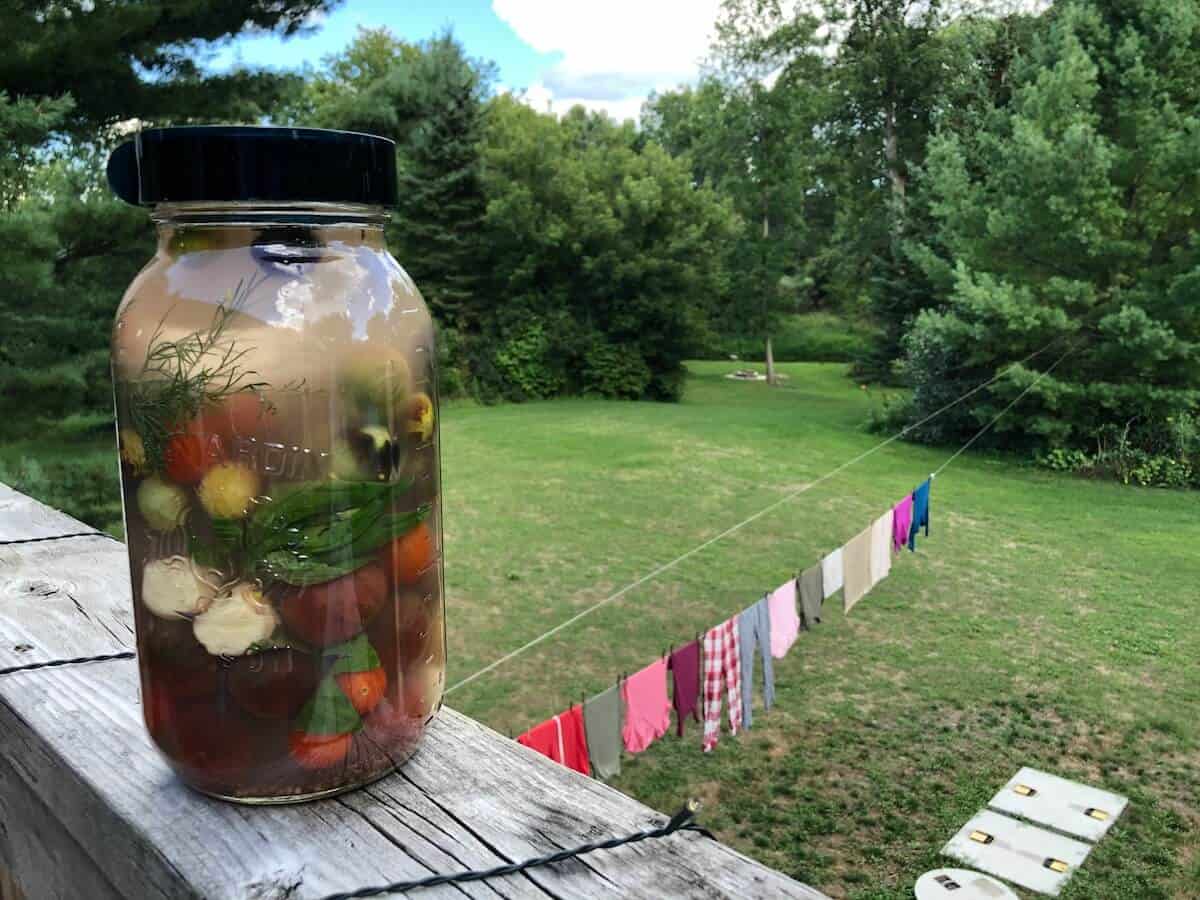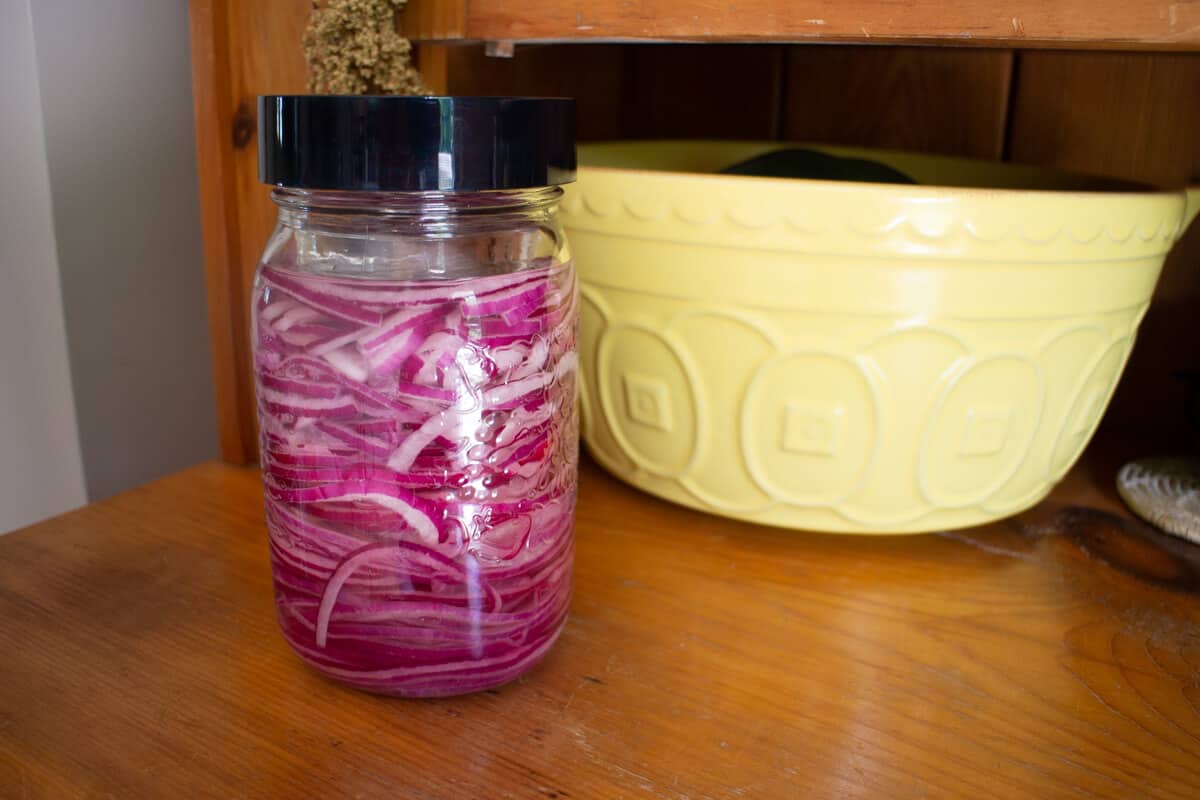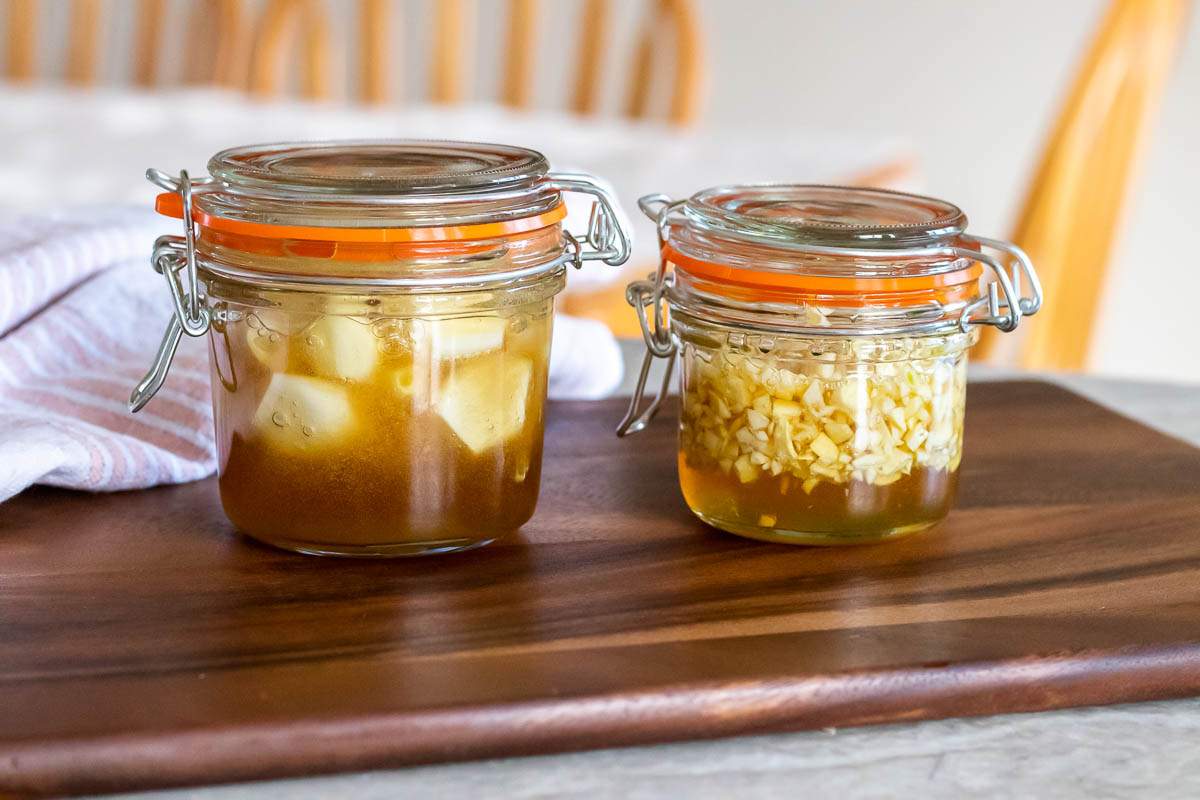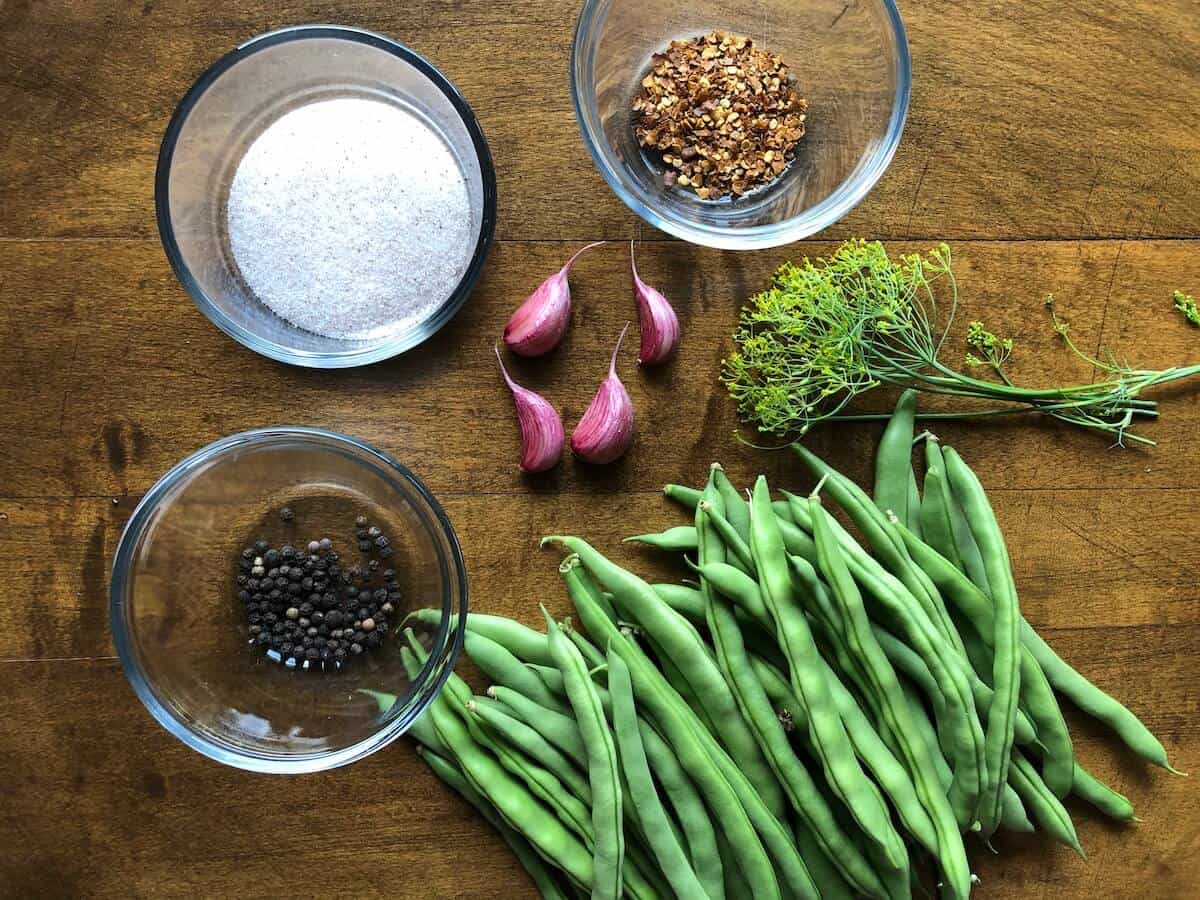Sumac Lemonade
Sumac lemonade, sometimes called sumacade, is made from staghorn sumac. It is reminiscent of a mellow iced tea, with a slight hint of a lemony-raspberry flavour. It’s not only delicious, but it’s lovely pinkish hue makes it beautiful to serve to guests!

This post may contain affiliate links, which means if you make a purchase through one of these links, I make a small amount of commission at no extra cost to you. As an Amazon affiliate, I earn from qualifying purchases. See full disclosure here.
What Is Staghorn Sumac?
Staghorn sumac (Rhus typhina) grows natively in the eastern part of North America. It’s commonly found along roadsides, treelines, and fencelines. It’s very easy to spot, especially in winter, when its bright red drupes contrast against the winter landscape.
The thick branches are hairy, and resemble the velvety antlers of a male deer (stag), hence the common name of “staghorn.”
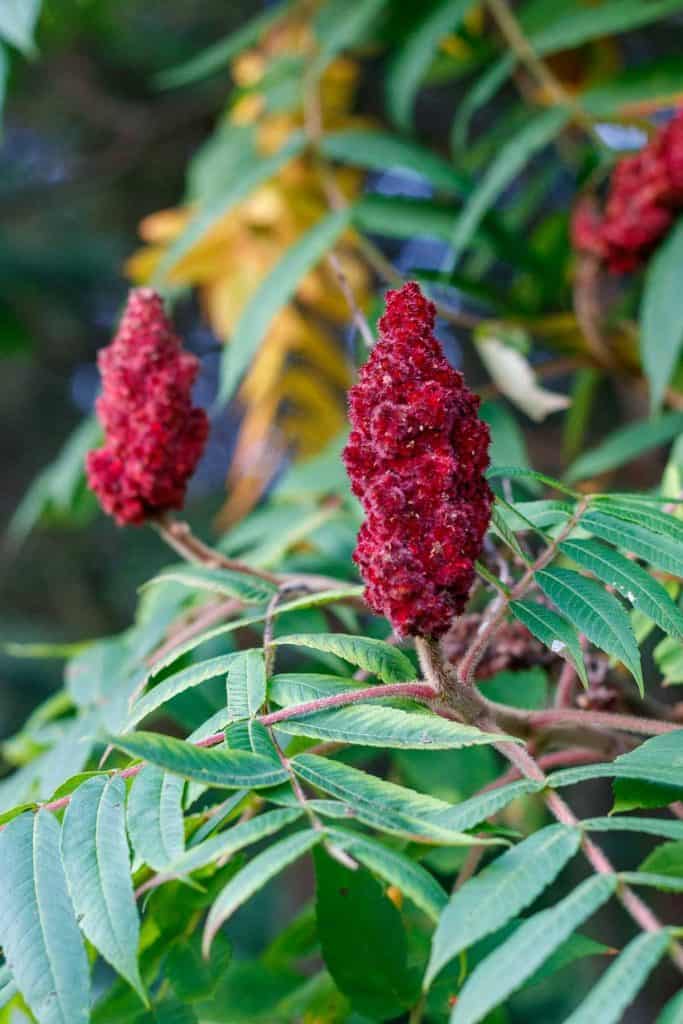
We have a good-sized stand of sumac trees right in our own back yard. Chances are, if you’ve gone on a country drive near the end of summer or early fall, you’ve seen these gorgeous trees lining the roadside, with their clusters of deep red berries (which are known as drupes).
It has a tart, lemony flavor, that lends itself perfectly to this refreshing summer beverage!
Some people confuse staghorn sumac with ‘poison sumac’. Not to worry, the two plants look completely different, and it would be impossible to confuse them (other than by name).
Poison sumac grows in swamps and wetlands, and its berries are pale green or white, whereas staghorn sumac has deep red berries.
If you see a stand of trees that looks like this, it is staghorn sumac.
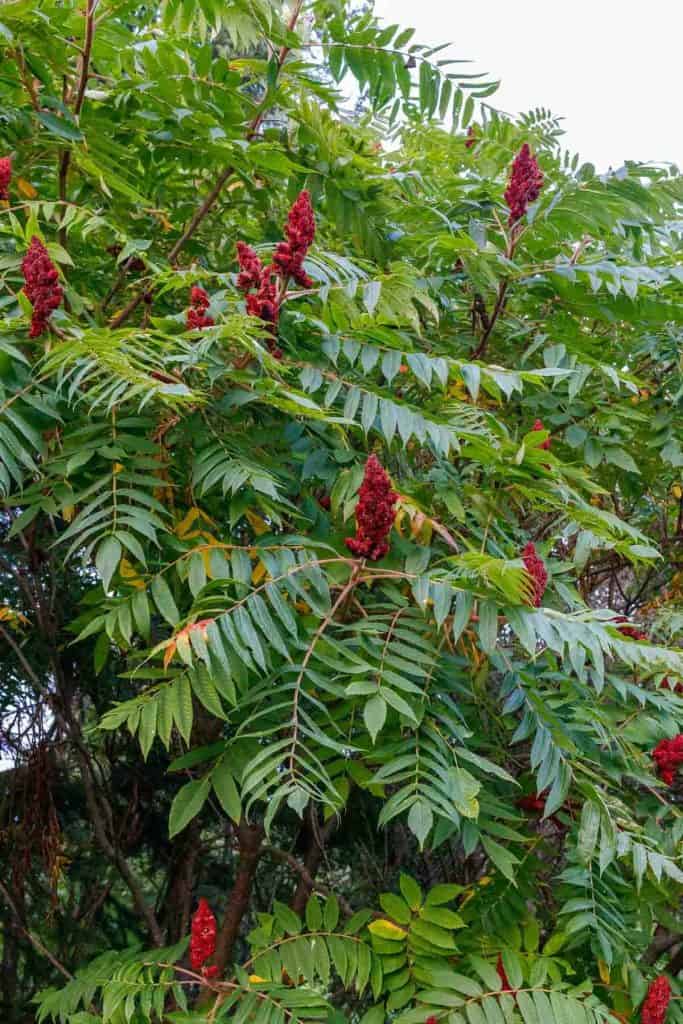
Health Benefits of Staghorn Sumac
Sumac is a rich in antioxidants, and it ranks very high on the ORAC scale. Antioxidants help neutralize free radicals, which reduces your risk of things like cancer, heart disease, and signs of aging. Antioxidants also play a role in reducing inflammation in the body.
Sumac is high in vitamin c – which adds a boost to our overall health and wellness.
It also contains small amounts of calcium, magnesium, and potassium. These minerals are known as electrolytes – so you can think of your sumac lemonade as your all-natural version of Gatorade (minus the unhealthy dyes, sugars, and other mysterious additives). It’s especially important to replenish your electrolytes if you’re physically exerting yourself on a hot day.
Sumac can reduce fasting blood sugar, which reduces cardiovascular risk in people with Type 2 diabetes.
Make up a big batch of sumac lemonade to store in your fridge so it’s easily accessible!
When to Harvest Staghorn Sumac

Depending on your location, staghorn sumac is typically harvested in late summer and early fall. The berries will turn a deep red color.
I usually test the berries by picking one of the berries, and tasting it. If it has a tangy, lemony flavor, it’s ready to harvest!
You will not want to harvest them if there has been rain recently, as the rain will wash all the lemony flavor from the berries. (The flavor resides in the water-soluble crystals that cover the berries).
I usually harvest toward the end of a dry spell.
How to Harvest Sumac
The best way to harvest Sumac, is to use a pair of sharp hand pruners, and snip the stem about an inch above the berry cluster. To make a gallon of sumac lemonade, you’ll need about 6-8 clusters.
I don’t rinse the berries because I don’t want to remove the flavor. Instead, I just do a quick check to make sure there are no insects (although insects won’t hurt you, I prefer not to have them in my lemonade). 😉
Be sure to only harvest what you need. Staghorn sumac is an important food source for overwintering birds, so I always make sure I save plenty for them.
General Foraging Tips
When foraging for wild sumac, some general common sense should be applied:
- Only forage in a location where you have permission to do so – avoid private property (unless you have permission), and of course, you shouldn’t forage in a conservation area, or in a state/provincial, or national park
- Avoid busy roadsides, as whatever you forage there will likely be dirty, and may have exposure to exhaust fumes
- Make sure you are 100% confident in your identification of wild plants – there are lots of good plant ID books on Amazon , such as Edible Wild Plants
- Know how to safely prepare your foraged food.
- Never take more than 1/4 of what you’re harvesting – always leave enough behind for animals and other foragers, and for regeneration purposes (unless it’s an invasive plant, then you should remove as much as possible)
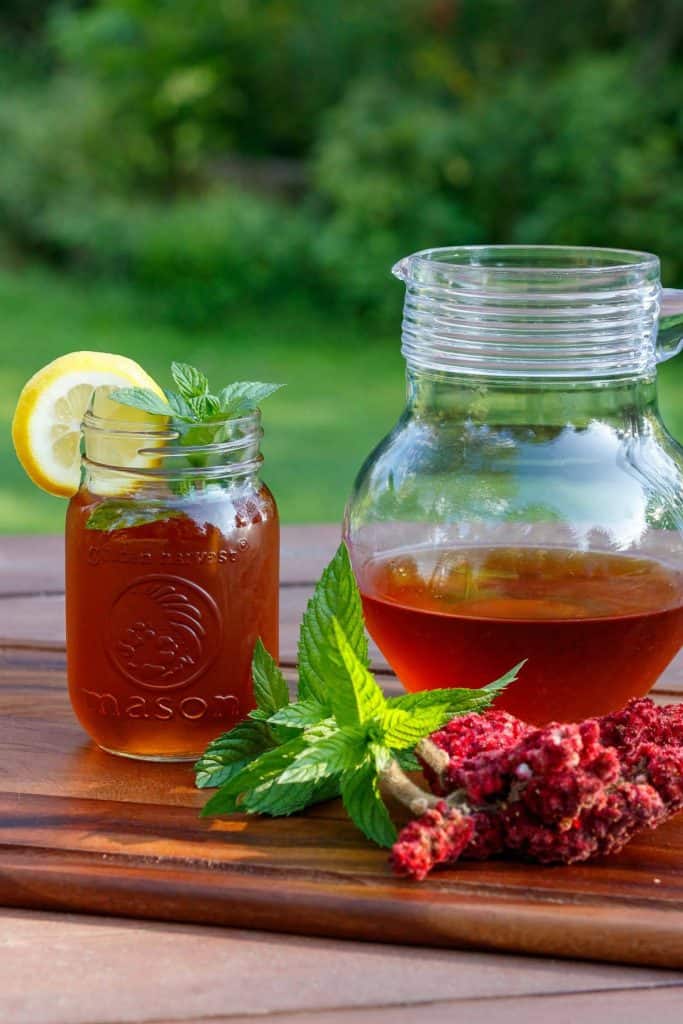
Other Ways to Use Sumac
Now that you know all the health benefits of sumac, you may be wondering what other ways you can use it!
Staghorn sumac is commonly used as a spice. You can harvest it, then dry it in paper bags. Once it’s completely dry, you can remove the berries, and grind them using a mortar and pestle, or a food processor.
Use it in winter as a delicious lemony spice on your food!
Frequently Asked Questions
How Long does Sumac Lemonade Last in the Fridge?
Ours disappeared pretty quickly, so I can’t say for sure. Although I would say up to a week is fine. If you want to make it last even longer, you could just store the sumac liquid in the fridge and only add honey to sweeten as you drink it. Since sugars tend to speed up fermentation, this would make it last longer.
What Is the Difference Between Sumac Tea and Sumac Lemonade?
Sumac tea is made by boiling the sumac in water. This releases the tannins, and makes more of a bitter tea.
Sumac lemonade is made by simply soaking the drupes in cool water, and the water-soluble flavor crystals will dissolve in the cool water. This happens fairly quickly (30 mins-1 hour), but I prefer to soak my berries a little longer so they also impart their pretty pink color.
Ingredients
- 6-7 bunches of sumac berries
- 3/4 gallon water
- 1/3 cup raw honey
- 2 lemons
- Mint for garnish
Supplies
- Gallon-sized glass jar or large glass pitcher
- Sharp pruning shears (or sharp scissors)
- Fine-mesh seive and/or cheesecloth for straining
How to Make Sumac Lemonade

To make the sumac lemonade, start by harvesting your sumac berries. Simply clip the entire cluster of berries from the sumac tree. (Be sure to use sharp pruning shears so you don’t damage the tree).
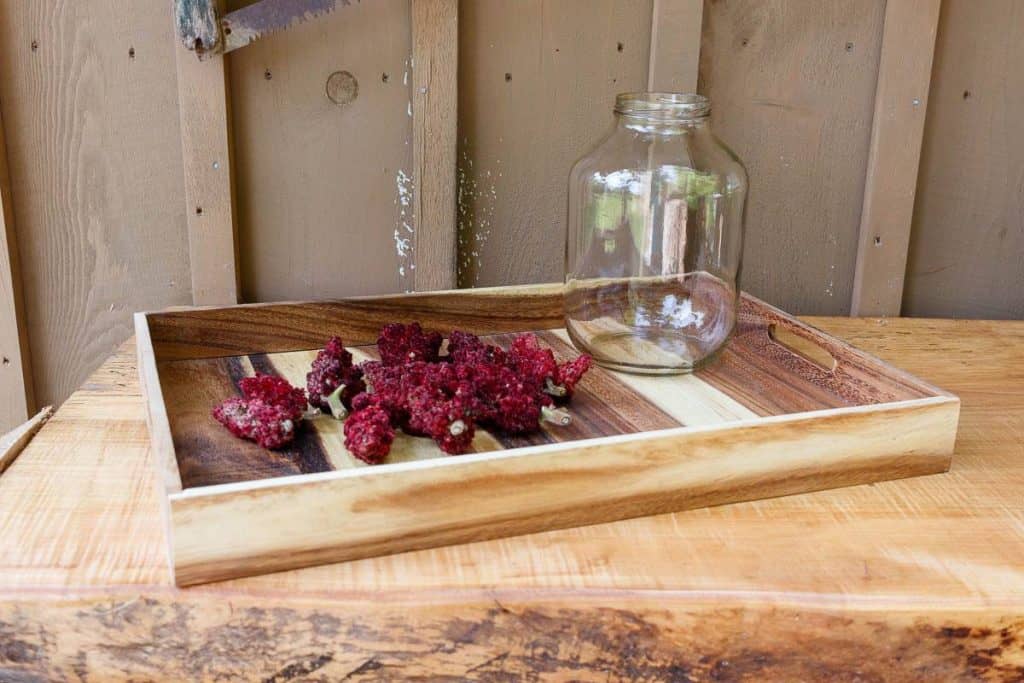
Inspect the drupes for any insects. If you find one or two, simply remove it. If you find a lot, discard the drupes and harvest different ones.
Do NOT rinse the drupes – you want to preserve the crystals that contain the lemony flavor!
Place the bunches into a gallon-sized jar, or large glass pitcher.
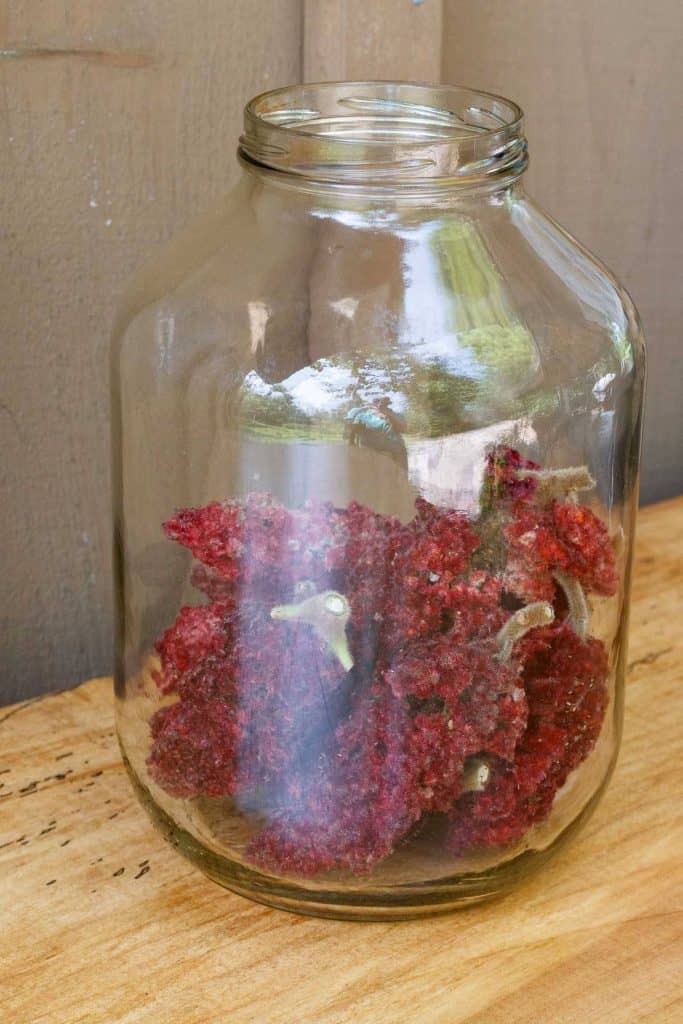
Fill the jar or pitcher with cool water, cover the jar (either with a lid or a cloth secured by a rubber band), and place the jar in the refrigerator overnight. The longer it steeps, the stronger the flavor will be.

The next day, remove the sumac from the liquid, and pour the liquid through a fine mesh strainer. (The berries contain very fine hairs which can irritate your throat, so you want to be sure these are removed). I like to line my sieve with a piece of cheesecloth to make sure I’m removing them all.
I strained my liquid into large mason jars to make it easy to store them in the refrigerator.
Once your liquid is strained, now you can sweeten it to your liking!
I added 1/3 cup of raw honey per half gallon of sumac-ade.
Cut a lemon in half, juice half of it and add it to your sumac lemonade, and reserve the remaining half for garnish.
Garnish with a sprig of fresh mint, and a slice of lemon, and enjoy!
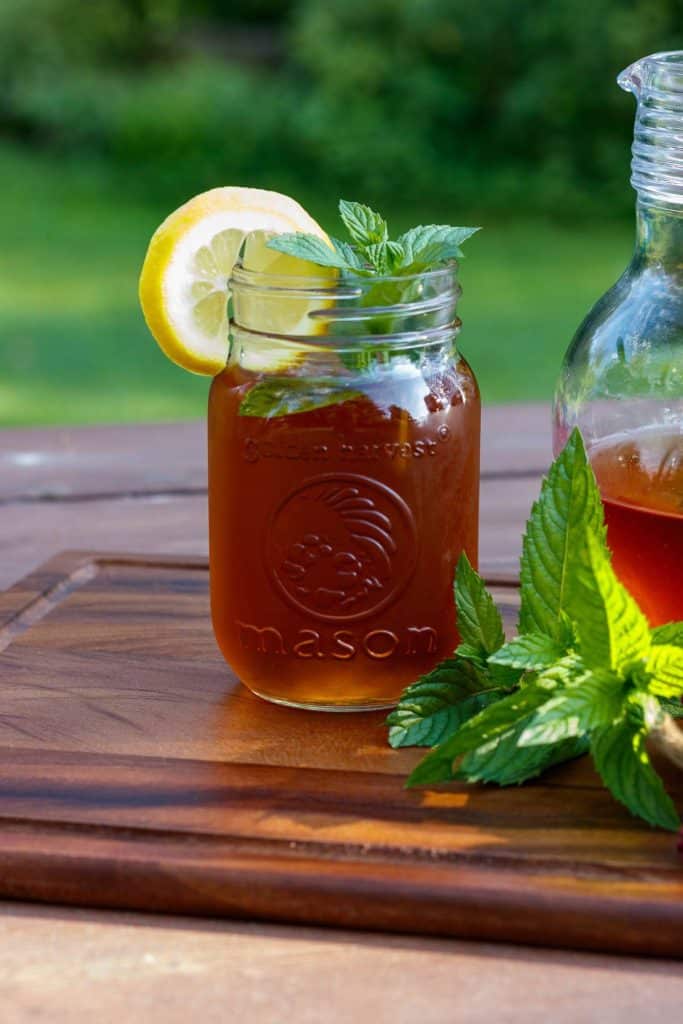
Other Recipes You Might Like
Tepache from Pineapple Scraps
Fermented Sweet Pickle Relish
Easy Fermented Red Onions
Pin It for Later

Sumac Lemonade
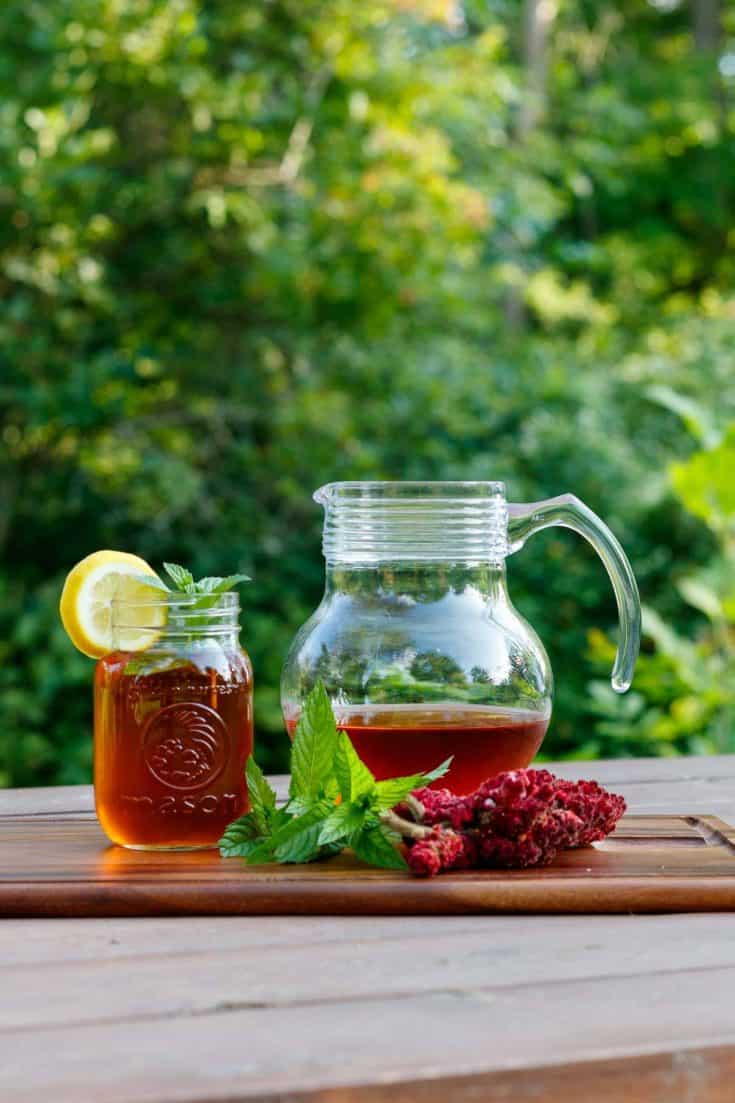
Make this delicious, tangy sumac lemonade, with foraged staghorn sumac.
Ingredients
- 6-7 bunches of sumac berries
- 3/4 gallon water
- 1/3 cup raw honey
- 2 lemons
- Mint for garnish
Instructions
- Place the sumac bunches in a gallon-sized jar, or a large glass pitcher
- Cover the sumac with cool water (insert Berkey link)
- Cover and refrigerate over night
- Strain the liquid through a seive with a coffee filter inside
- For a sweetened sumac-ade, add 1/3 cup of honey (or to taste)
- Cut one of the lemons in half, and juice it. Add the lemon juice to the sumac lemonade
- Cut the remaining lemon into slices for placing on the rim of your glass
- Garnish with mint if desired
Nutrition Information
Yield
6Serving Size
1Amount Per Serving Calories 86Total Fat 1gSaturated Fat 0gTrans Fat 0gUnsaturated Fat 0gCholesterol 0mgSodium 111mgCarbohydrates 22gFiber 3gSugar 18gProtein 1g

